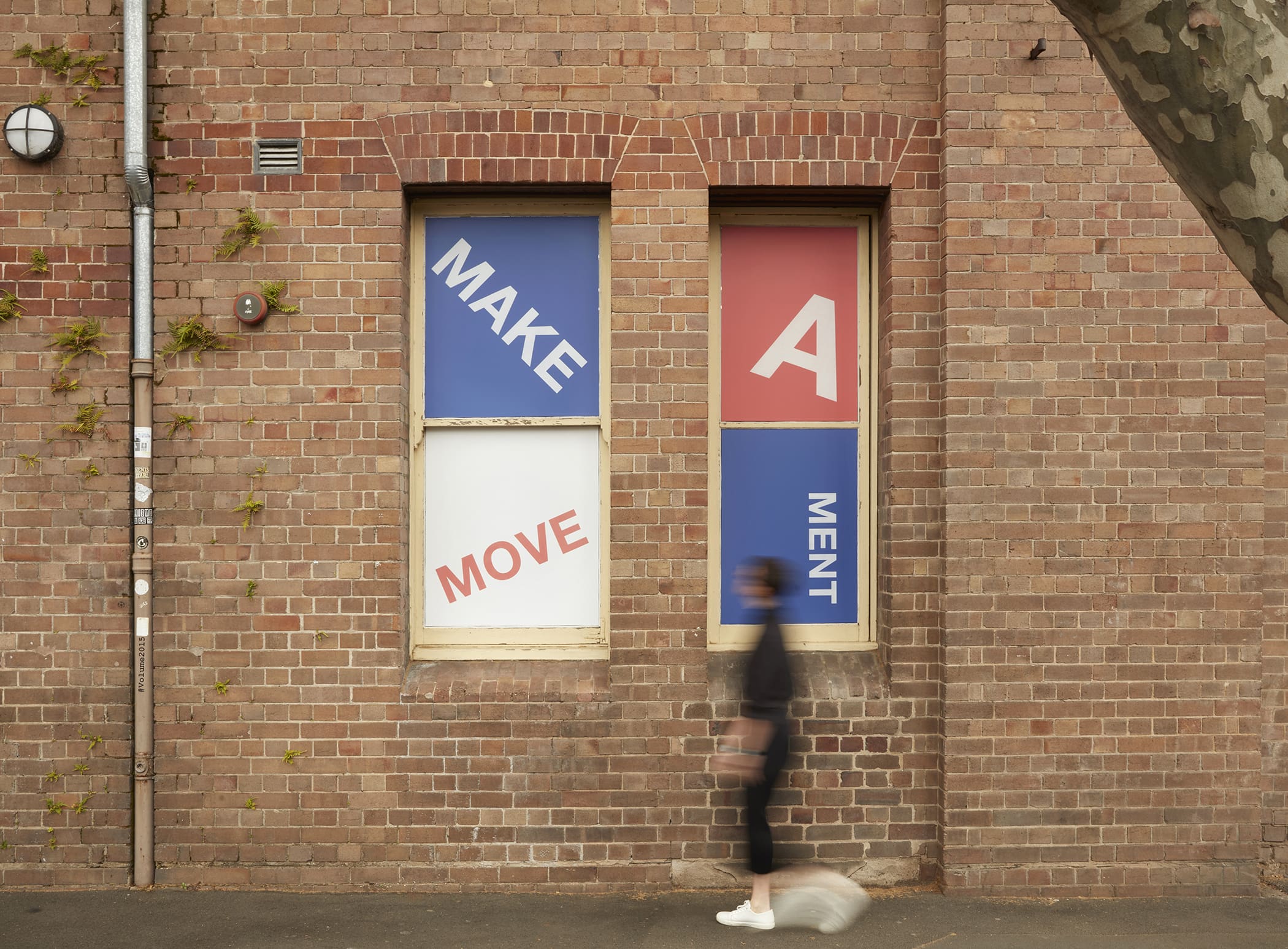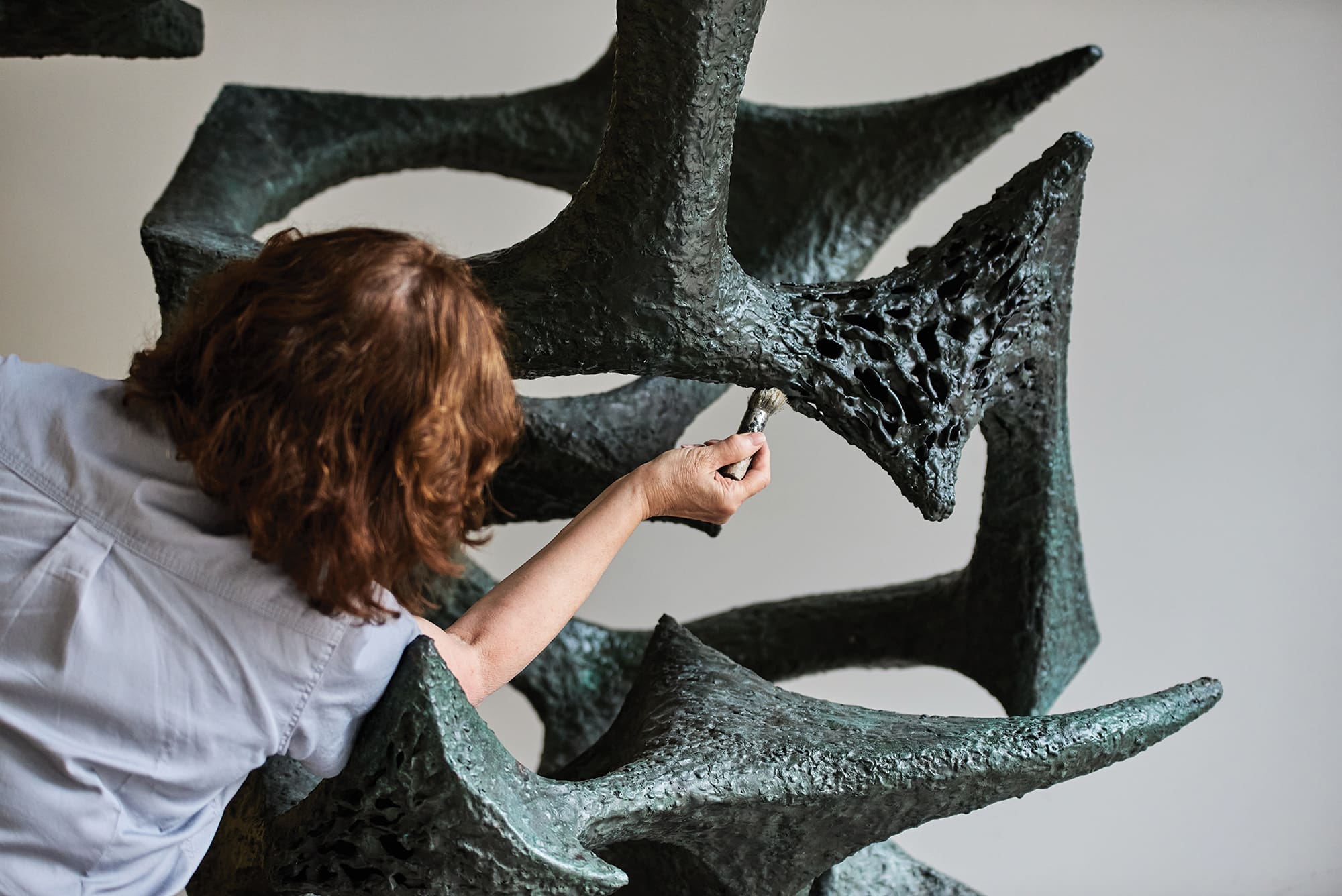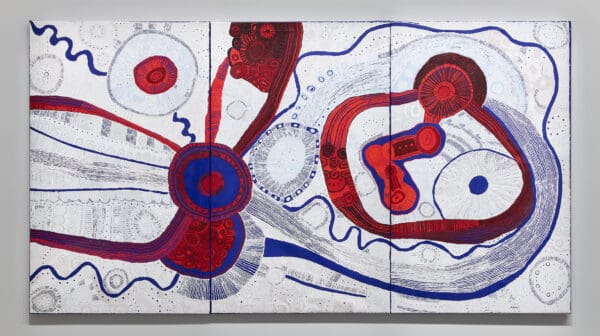
Life Cycles with Betty Kuntiwa Pumani
The paintings of Betty Kuntiwa Pumani form a part of a larger, living archive on Antaṟa, her mother’s Country. More than maps, they speak to ancestral songlines, place and ceremony.
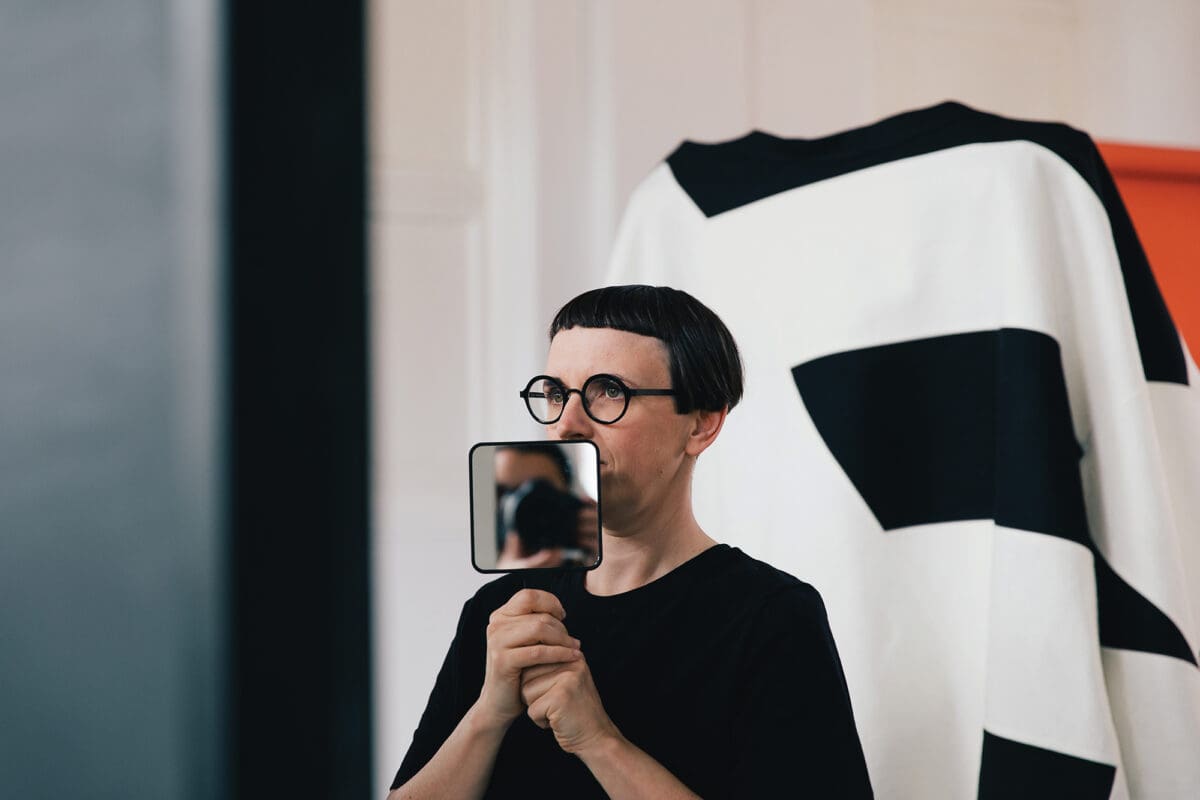
Diana Baker Smith and Kate Blackmore, Brief Illuminations Between Interruptions, 2022, Single channel 4K video, 13:12 minutes. Photo: Anna Hay.
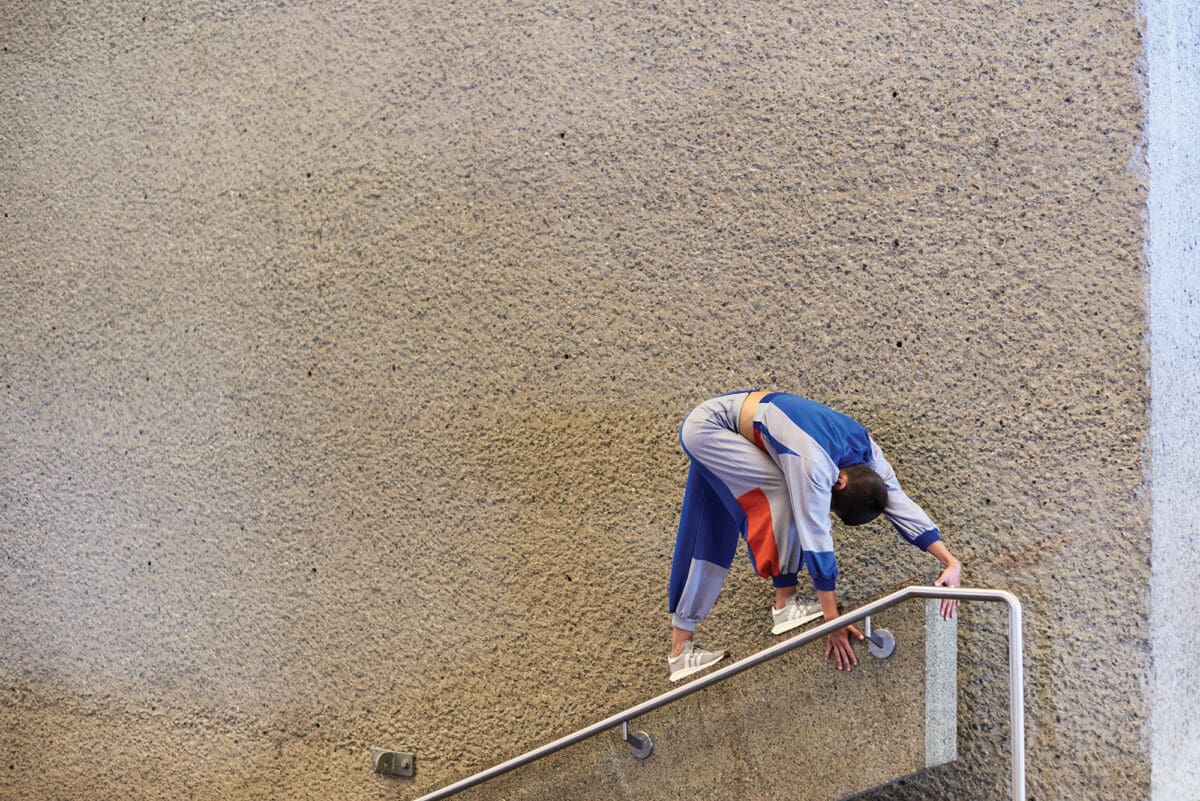
Diana Baker Smith with Ella Sutherland, Make a Movement, 2021. Applied vinyl, Four panels (l-r: 88 x 101cm; 100 x 70.5cm; 88 x 101cm; 99 x 70.5cm). Installation View, Artspace, Sydney. Photo: Zan Wimberley.

Diana Baker Smith and Kate Blackmore, Brief Illuminations Between Interruptions, 2022, Single channel 4K video, 13:12 minutes. Photo: Anna Hay.
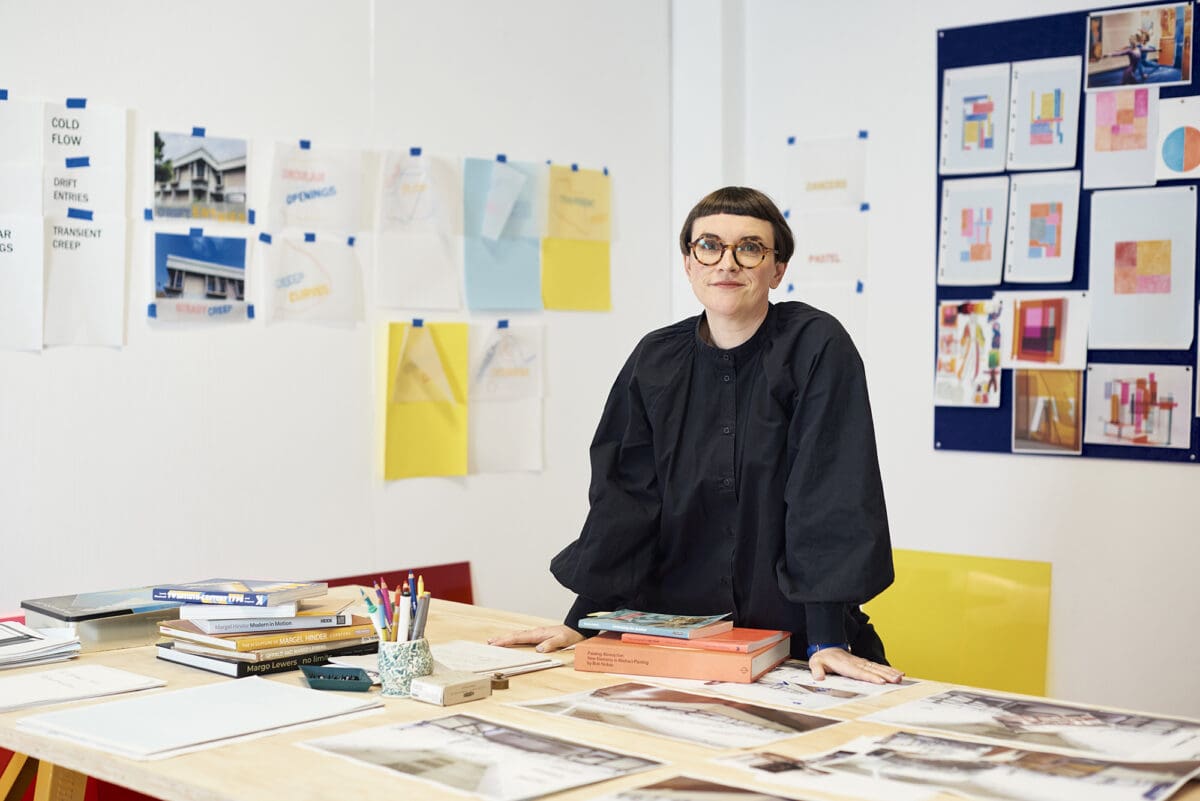
Diana Baker Smith. Photo: Lucy Parakhina.

Diana Baker Smith. Photo: Lucy Parakhina.
Diana Baker Smith carries an acute attention to ephemeral, invisible or hidden histories. Whether it is tracing the movements of a public artwork through her hometown of Sydney, or piecing together a performance history from deteriorating and lost archives, Baker Smith pulls back layers of history to explore the forgotten.
In conversation with writer and curator Amelia Wallin, Baker Smith reveals her research-based methodologies as she prepares to present a site-specific work for Perth Institute of Contemporary Arts (PICA), as part of the gallery’s annual Judy Wheeler Commission. PICA sits on the unceded cultural and spiritual homelands of the Whadjuk Nyoongar People. Baker Smith’s commission, a graphic score and chorographical piece titled Falling Towards Another (a score for the void), responds to PICA’s colonial architecture and history as one of Perth’s first schools, and its later transformation into a contemporary art space in the 1980s.
I’ve noticed that several of your works begin with close attention to a space, a site, or object. What lens do you bring to a space or site, or what questions do you ask yourself when beginning a new project?
In some instances the story or object comes to me, and then in other instances I go towards it and that determines the approach. There’s always a feminist lens and an emphasis on performance, because that’s my background and it shapes my overarching method. But, in practice, I usually begin in the space, or in the archive, and wait for things to reveal themselves.
I often think about the layers of time present in an object, and what that might reveal about the politics of the institution or site housing that object, and the way that politics is absorbed into a particular history, and the way that history is told.
I’m drawn to things that are broken, lost, missing, unfinished, in transition. Those features indicate a rupture in how we understand an object, or site, or place, or history, and it’s usually from there I start building the work.
How have you approached the PICA commission?
For PICA, it is the building itself that has been my key interest. In particular, the architecture, and the way bodies move through that space. I was interested in the building’s various layers as reference points. It’s an intensely colonial piece of architecture, with all the contradictions and hybridity inherent to the imperial project. It has a Jacobean turret, stained glass windows, Neoclassical columns, Venetian arches at the entrance, as well as various Gothic features. It’s an amalgamation of very different styles, all coded as European “high culture”.
Originally a school, it later became a technical college, and then PICA, so it’s always had this cultural aspect, which the architecture is designed to reinforce; the idea of Europe, played out about as far away from Europe as you can get. And in thinking about how the building’s use can shift over time, I started thinking of the commission almost as a choreography of building.
Can you describe your research process for Falling Towards Another (a score for the void)?
I travelled to Perth/Boorloo to do a residency and meet with the dancer, Sophie Burgoyne, who I am working with on the project. Together we undertook a series of exercises of tuning into the space, thinking about the audience’s passage through the space, noticing movements and language.
And then I spent time, as I always do, in the archive, where I was mainly drawn to the architectural plans, and in particular the images from when it was under renovation, and being turned into PICA. The specific area that we’re looking at, which is the mezzanine space, is referred to on the architectural drawings as a “void” or “double void”.
A few years ago, as part of a reading group, I read Karl Marx’s Capital. Towards the end of the book Marx discusses the Swan River Colony, which is present-day Perth/Boorloo, as an example of colonial extraction, settlement, labour markets and expropriation. At one point, Marx is trying to explain dialectical movements, and he writes that “it is a contradiction to depict one body as constantly falling towards another and at the same time constantly flying away from it. The ellipse is a form of motion within which this contradiction is both realised and resolved.” I have this quote on the wall in my studio. He was trying to make a point about the relationship between capital and labour, but to me it sounds less like economic analysis and more like a performance score.
Reading the word ellipse, my brain mistook it for the word ellipsis. I looked it up later, and they have the same Latin root word. So with all of these ideas floating around—the movement of capital, the ellipse and the ellipsis—I thought, the way this space operates is like a score; it outlines how people can move through and think about this space. I had the idea of two dancers in a state of motion and tension between each other, in which they’re falling towards one another, and also flying away, moving around and around in this architectural void.
Can you describe what the space might look like?
The work consists of a large-scale graphic score painted directly onto the four walls of the mezzanine space at PICA and a live performance with two dancers. The dancers will perform the work on the balcony of the mezzanine and will be connected by a huge piece of fabric, which extends over the void, and traces the space between them.
The score is made up of a series of intersecting lines and shapes that refer to architectural features— such as pilasters, windows, doorways, architraves—of the building that have been removed over time. I have used the symbol of the ellipsis as a main feature of the score. Ellipsis refers to two suspension points, which relates back to the bodies of the two performers, but it also means to withdraw, represented textually by three dots. Those three dots are cut out of the fabric between the dancers and painted on the walls wherever doorways and windows have been removed and bricked over. Ellipsis also means to pause. So, for the dancers performing in the mezzanine, the ellipsis will signal for them to pause.
My final question is about the audience for this work. When I encounter score-based works such as this, I feel a connection to the space that I’m moving through, a heightened awareness of my body moving through that space. What do you hope an audience takes away?
I mean, basically what you describe. I really hope that an audience will feel it in their body. I hope that they’ll think about the layers of time and history that are in that building, and how the site has changed over time.
I’m fascinated with buildings, and thinking about what a building can tell us about history, and about time and memory, in so-called ‘Australia’. I’m interested in what this can tell you in terms of your own time, your own temporality. I hope that if you spend a little bit of time with the work, you’ll start to see the echoes and traces of where a window once was, how the building itself has shifted, and the different time stamps that are in the walls themselves, and that this might be a potential unravelling.
Falling Towards Another (a score for the void)
Diana Baker Smith
Perth Institute of Contemporary Arts (Perth WA)
9 February—19 January 2025
This article was originally published in the January/February 2024 print edition of Art Guide Australia.
